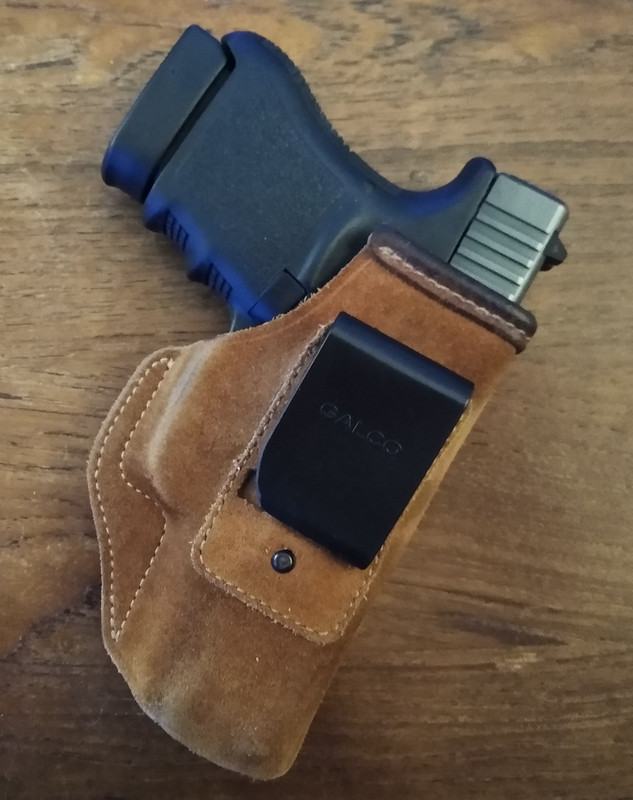This sounds "reasonable", however, I don't see it as anything useful beyond a really rough guideline.
Right.
1. That is why I used the term "reasonable" as opposed to trying to quote a percentage.
2.
All that we need is "a really rough guideline". This isn't about writing and defending a PhD dissertation, it's about getting a feel for how things work in the real world.
It's not necessary to be able to quote some super-precise percentage, nor would a figure like that be useful except as an average taken across a huge number of shootings. We just need a rough idea of what happens so we can use that rough idea to make reasonable choices based on what we feel we want to prepare for.
And the reason for that is simply the real world data is all over the place, poorly reported, and not given to neat, accurate statistical tabulation or analysis.
Well, yes and no.
1. You can collect statistics on just about anything, and there are calculations (like averages, standard deviations, etc.) that take huge amounts of nasty, real-world data that's all over the place and still provide useful information for people who want to get a rough idea of reality.
2. We don't need super-precise figures--just getting a rough idea is plenty. Focusing on the idea that a precise number isn't available ignores the fact that we just need to get a feel for the situation.
There's tons of information out there. In the time it takes to come up with a handwaving explanation of why there isn't any information or why it's not useful, one could instead learn some useful facts.
Here are a few results from a quick internet search. These are all from the first page of results.
https://daiglelawgroup.com/new-study-on-shooting-accuracy-how-does-your-agency-stack-up/
https://cvpcs.asu.edu/sites/default/files/content/projects/hitting target article_0.pdf
https://s3.wp.wsu.edu/uploads/sites...o-Police-Combat-Handgun-Shooting-Accuracy.pdf
https://www.ajc.com/blog/get-school...yet-want-arm-teachers/mDBlhDtV6Na4wJVpeu58cM/
https://www.cnn.com/2020/08/26/us/why-police-shoot-so-many-rounds-trnd/index.html
So what's the answer?
If you want a single number, accurate to several decimal places, then prepare to be disappointed. That's not how it works. As you say, there are a lot of variables.
On the other hand, if you want to get a REASONABLE idea of what kind of miss rates to expect, that's entirely possible.
Finally, and this is really important,
there really aren't any surprises in the data for people who are willing to look at the problem from a common-sense perspective.
When people are getting shot at, attacked, are in fear of death, are moving to try to stay alive, are trying to hit an attacker that is maneuvering to get at them and/or avoid injury themselves, they miss. A lot.
To quote one source, researchers have documented that “police departments rarely ever achieve a 50% hit rate".
So what's a reasonable miss rate? It's going to depend on the scenario. But what we can easily see is that it's not reasonable to expect to hit with every shot--it's probably not even reasonable to expect that most of the shots taken in a dynamic self-defense situation will connect.
So let's say I think I'm better than the average cop and I will connect with 50% of my rounds in a self-defense encounter. Let's say I want to prepare for the possibility of being attacked by two persons and I feel that it's reasonable to assume that I might have to shoot both of them to stop the attack. Let's say I think that shooting one of them once and the other one twice might be sufficient to end the attack.
That means I need 3 hits. With my assumed hit rate of about 50%, it wouldn't make sense for me to carry a 5 shot pistol because the odds are I won't be able to make 3 hits out of 5 shots with a 50% hit rate.
Instead of just handwaving/handwringing/guessing, talking about being comfortable or choosing a gun based on preference, I can now look at the situation and try to decide if I want to lower my expectations of the type of scenario I can reasonably expect to deal with or I can change the gun I plan to carry.
I can decide to carry a gun that holds, say, 7 rounds, or I can decide that I'm ok with ignoring the risk of being attacked by two determined criminals and that I'm only going to prepare for one attacker scenarios, or for scenarios where only one attacker is determined enough to pursue the attack when a gunfight starts. Either one of those decisions could be reasonable--we all prepare to only a certain threshold because it's impossible to prepare for everything. That's just reality--where each of us draws that line depends on our own mindset and circumstances.
But what is NOT reasonable, for example, would be for me to think that I'm prepared for a self-defense scenario with 3 determined attackers because I have a 5 shot pistol and there are less than 5 attackers. We're just talking about understanding reality and using that understanding to make reasonable decisions.

